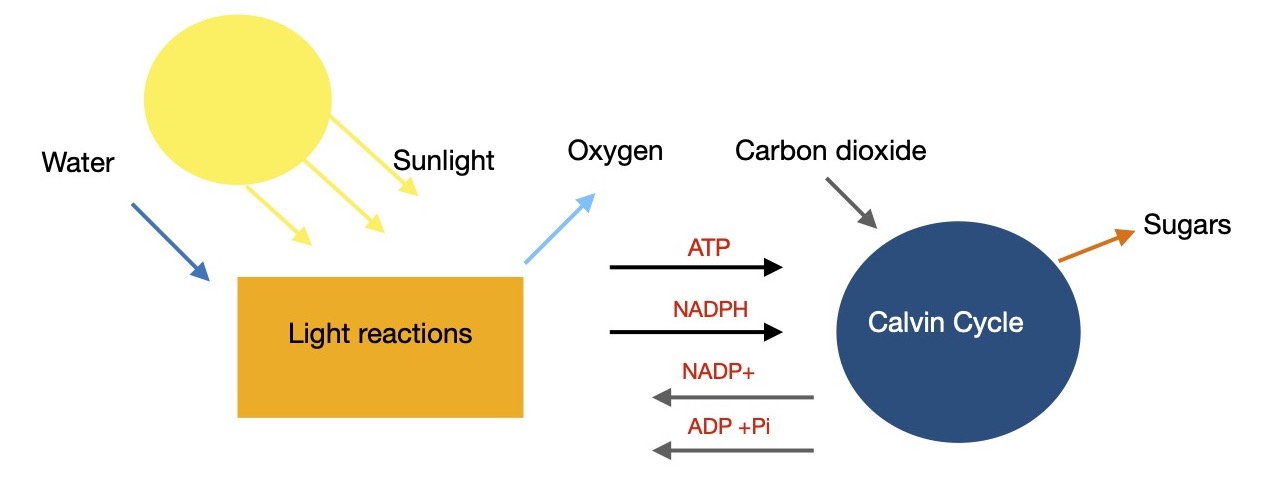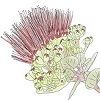4.3: Photosynthesis
- Page ID
- 59230
One of the most amazing things about plants is that they can make their own food through photosynthesis. Photosynthesis is the chemical process in which plants transform sunlight into chemical energy. The process has evolved for millions of years and thanks to it, humans can survive by eating the bounty produced by plants and breathing the oxygen released as a by-product. How does that happen? To photosynthesize plants need the energy of the sun, water from the soil, and carbon dioxide from the atmosphere. The chemical reaction then gives rise to glucose (sugars/carbohydrates), water, and oxygen (Figure \(\PageIndex{1}\)). The sugars produced are either used by the plant for growth and development or are stored in the plant. Sweet potato plants are known to store carbohydrates in their roots while aloe plants store it in their leaves.

Photosynthesis happens in a cell organelle called chloroplast, which contains a pigment called chlorophyll. There are two main phases of photosynthesis. A light-dependent reaction and the Calvin Cycle (light-independent reaction). During the light-dependent reactions, sunlight and water are needed. Water molecules split, in a series of light reactions, releasing oxygen. The energy generated in this step is used to fix the carbon dioxide into glucose (sugar) during the second phase of photosynthesis or the Calvin Cycle (Figure \(\PageIndex{2}\)).



